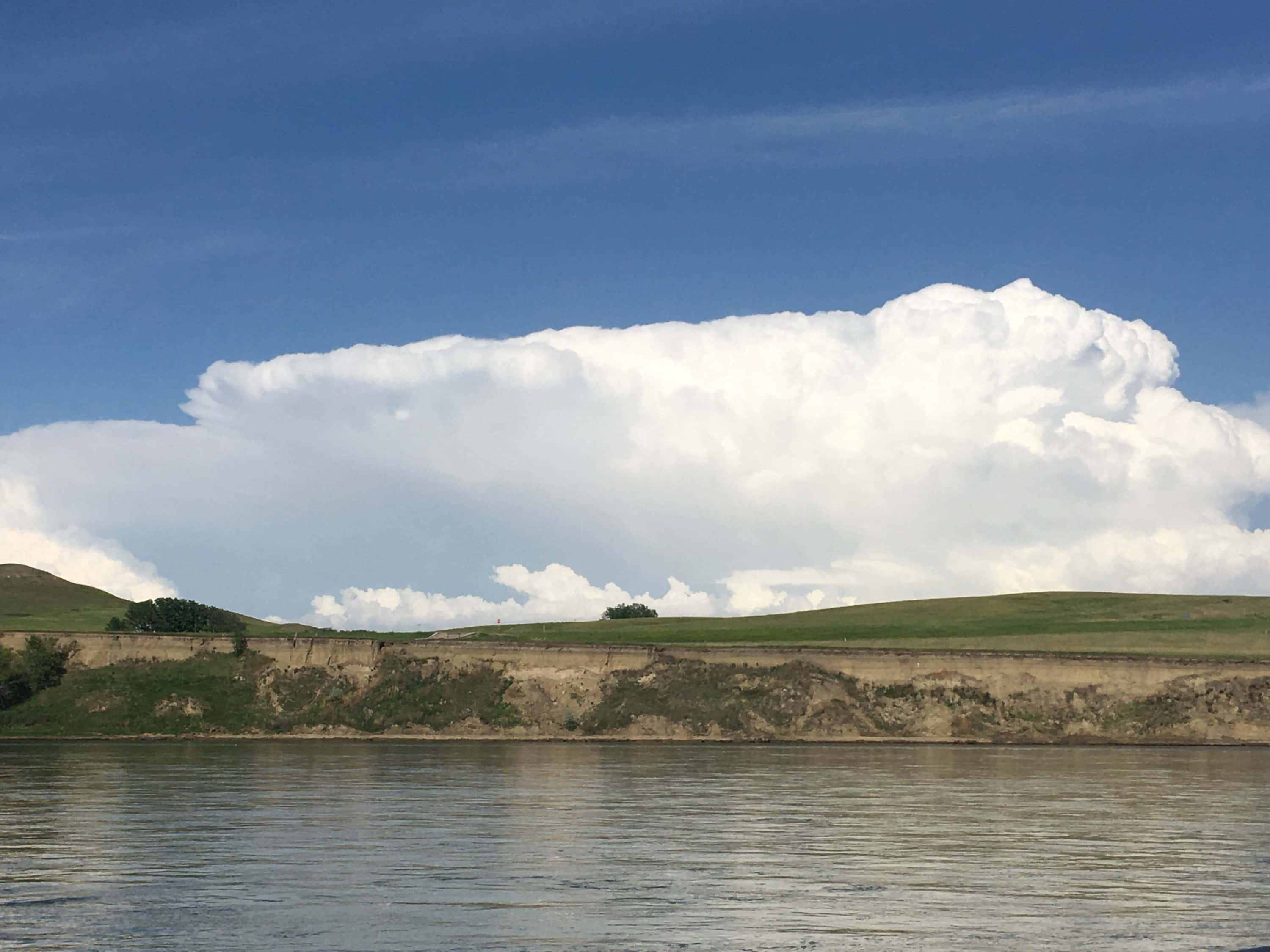
Changes Ahead. A shift in the wind can signal changes in pressure or advancing storm fronts, and suggest swings in fish activity and ultimately angling success.
By Nick Simonson
This has been perhaps the windiest spring I can recall since I became a dedicated angler several decades ago.
The scattered calm days seem to come at a rate of one in ten or so, but the balance of the spring has been dominated by gusty conditions and stretches where even when the wind shifts, it comes out of a new direction at an equally fevered pace, wasting little time in transition.
Going through the motions of correcting a slow troll with the bow mount motor on the water, or bracing the steering wheel white-knuckled against the gusts while driving down the highway this season has reminded me of one of my favorite fisherman’s sayings and given me a reason to dive into it a little more.
There are obviously some variations on it from region to region, but it generally goes like this:
Wind from the west, fish bite the best.
Wind from the south, hook goes in mouth.
Wind from the east, fish bite the least.
Wind from the north, don’t venture forth.
Taking the first half of the adage, which is obviously the more positive prediction for any angler setting up a weekend trip, west and south winds are historically favorable to anglers no matter the season. Both directions of wind suggest improving weather conditions or stable patterns. West winds often follow a high-pressure system and indicate that the disruption that often occurs on the front end of it is over and things are stabilizing. And while west winds can be strong, they often aren’t as severe as the gusty conditions that come on a northerly breeze, especially if they have a little southern angle mixed in.
South winds too are a favorable forecast for anglers because they represent two positive factors particular to the upper Midwest: an influx of warmth and a potential shift in the weather behind them. Winds blowing from the south may not necessarily make the hook go in a fish’s mouth as the saying predicts, but the direction usually does bring with it warmer temperatures to the northern latitudes of North America, making it easier (or at least more comfortable) for anglers to get out on the water. Additionally, south winds often precede a low-pressure system, which is a noted trigger for fish activity. Those coming changes in pressure may spur feeding ahead of a storm system and anglers are wise to watch for that stretch of southerly winds ahead of the shift and plan accordingly.
Moving on to the back half of the saying, it may be more of a matter of correlation versus causation, as I have a number of days in my journal that were dominated by east winds where the fish seemingly jumped in the boat. However, east winds typically signal precipitation and generally mean a region is in the midst of a low-pressure system and getting rain or snow. By the time the wind moves from south to east on the compass, the pressure shift is generally complete and the fish have often been affected by the changes. Putting those two factors together means conditions are not as fit or as fair for both angler and fish, and as a result there’s less fishing and less catching going on.
That brings us to the north wind. A noted harbinger of instability and often colder temperatures particularly in the upper Midwest, a northerly flow tapping arctic air brings with it a cool down and often follows a low-pressure system or precedes a high-pressure dome moving in. It’s often a time of transition and quick shifts, signaling volatility. That variability can be the causation of tougher fishing, and, like with the east wind, can also make things unpleasant for anglers, requiring additional layers, hats and other items to stay warm – particularly in the spring.
As with any adage that goes back a century or two, it should be taken with a grain of salt. I am by no means a certified meteorologist, and I live by the idea that any time one can be fishing – without having to deal with lightning, snow, or other severe springtime conditions – is the best time to be out there, regardless of the wind.
There are days however that I take note of with this old adage as a guide, in part due to the way the wind is blowing and how I can adjust my presentation based on what the gusts tell me about the present weather, the possible activity level of fish, and what’s likely to come…in our outdoors.

